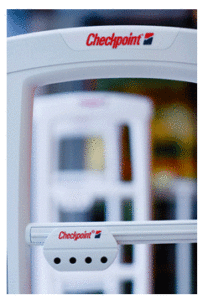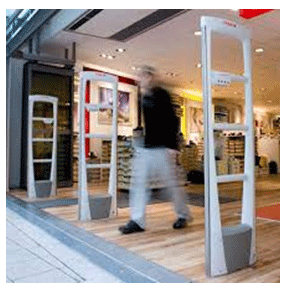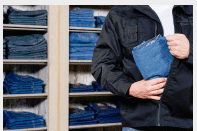It is not surprising that employee theft and shoplifting increases every year. With online “chat rooms” where shoplifters share their “methods” and the many ways they can get away with shoplifting, it is not surprising the losses across the globe are reaching staggering amounts.
In 2013, the losses due to shoplifting amounted close to $16 billion globally, a 34% increased over the previous year. The National Retail Security Survey revealed that in 2015 retail lost an approximate $45 billion due to shrinking, up by more than a billion from the previous year.
What are the expectations for 2016, and 2017? What will the losses amount to this year?
For more about this and other informational topics, follow the links below.
Employee Theft on the Rise According to Latest Retail Survey
Major retailers lost over $44 billion in thefts by customers and employees according to Jack L. Hayes International’s annual Retail Theft Survey.
Wesley Chapel, Fla. — Jack L. Hayes International, a leading loss prevention and inventory shrinkage control consulting firm, has released its 29th Annual Retail Theft Survey.
According to the survey, 438,000 shoplifters and dishonest employees were apprehended in 2016 by 23 large retailers who were able to recover over $120 million from the thieves.
“In 2016, dishonest employee apprehensions increased almost 10%, with the dollars recovered from these dishonest employees up nearly the same amount (9.3%). While shoplifting apprehensions and the dollars recovered from these shoplifters decreased ever so slightly, 0.2% and 0.9% respectively”, says Mark R. Doyle, president of Jack L. Hayes International.
According to the survey, one out of every 27 employees was apprehended for theft from their employer in 2016. The total number, 53,786, is an almost 10% increase compared to last year.
Over $42 million was recovered from dishonest employees in 2016, up 9.3% from 2015.
Survey participants apprehended 384,296 shoplifters in 2016, a slight decrease of 0.2% from the prior year. The average shoplifting case value in 2016 was $203.18, a slight decrease from 2015 when the value was $204.57.
C-stores may suffer from a bundle of cash-related issues, but tech-driven solutions are on the way.
One of the show-stopping numbers from the musical “Cabaret” includes the famous refrain, “Money makes the world go ’round.”
But money also makes the world of convenience retailing complicated. And problems such as cash miscounts, sticky-fingered employees and lack of data around dollars can stop the show for eager-to-perform operators who have to devote valuable time and resources to solving these snags.
To help shine a spotlight on the currency concerns c-store retailers face, CSP and Technomic conducted their seventh-annual cash-management report, commissioned by FireKing Security Group (complete results below). Finalized in March, the study surveyed 175 convenience operators who make or influence choices related to cash flow, banking and cash management in their stores. Thirty-seven percent of respondents operate one store, while 63% operate two or more locations.
Results from this year’s study reveal big concerns—and opportunities—for retailers’ cash-handling practices.
The Amazon Approach to Groceries Won’t Replace Stores
It’s a model that could thrive in dense, affluent areas. Most areas are neither dense nor affluent.
For a certain kind of urban professional, Amazon and Whole Foods are brands that define the consumption of staple goods: the weekly trip to pick up cheese, produce, maybe some pasture-raised organic beef; and the nice UPS man dropping off everything else, from toilet paper to truffle oil. On Friday, those folks learned that they are facing a future of truly one-stop shopping: Amazon.com Inc. plans to acquire Whole Foods Market Inc. for $13.7 billion.
But what about the rest of America? Well, if you happen to work for rival grocery chains, the news is not good. Competitors from Costco to Kroger to Dollar General saw significant chunks knocked off their market capitalization. Other casualties may include Walmart, the $15-an-hour minimum wage (Amazon is aggressively experimenting with cashierless stores), and the rather unique corporate culture that drives Whole Foods.


 As many of you know Alpha High Theft Solutions was acquired by Checkpoint Systems many years ago. Checkpoint has encouraged Alpha’s brand growth and innovation. Alpha has produced the best high theft solutions, hands down in the industry. Innovations like Spider Wrap, Keepers, Bottle Locks, Cable Locks, Shark Tags, specialized hard tags literally protect billions of retail products worldwide.
As many of you know Alpha High Theft Solutions was acquired by Checkpoint Systems many years ago. Checkpoint has encouraged Alpha’s brand growth and innovation. Alpha has produced the best high theft solutions, hands down in the industry. Innovations like Spider Wrap, Keepers, Bottle Locks, Cable Locks, Shark Tags, specialized hard tags literally protect billions of retail products worldwide. I don’t know how many times I have heard it, but I have heard it said that shoplifting is not a crime that is premeditated. I have heard and read the arguments that dismiss the seriousness of the crime and portray the criminals as opportunists acting on the spur of the moment. Implicit in the argument is the minimizing of the extent of Organized Retail Crime rings as well as the willingness of shoplifters to steal from your customers. I have even had people who think along these lines voice their disapproval when I had shoplifters I had apprehended and was walking to my security office. I recall one occasion when I apprehended three young men, about 14 years of age and was by myself. I had them stand with their faces against the wall as I had to get my keys out to unlock the door to my office. Two men were sitting outside my office and one muttered under his breath that I was being a butt, only he used a more colorful adjective. I looked at him and told him to mind his own business. The point is that there are people more sympathetic to the criminals than retailers and see shoplifting as a minor infraction at worst and mischievous behavior at best. The attitude among those that hold to those beliefs might change if they realized that these shoplifters aren’t necessarily choosy about who they steal from. They also don’t consider the safety risks posed by the careless acts of these criminals.
I don’t know how many times I have heard it, but I have heard it said that shoplifting is not a crime that is premeditated. I have heard and read the arguments that dismiss the seriousness of the crime and portray the criminals as opportunists acting on the spur of the moment. Implicit in the argument is the minimizing of the extent of Organized Retail Crime rings as well as the willingness of shoplifters to steal from your customers. I have even had people who think along these lines voice their disapproval when I had shoplifters I had apprehended and was walking to my security office. I recall one occasion when I apprehended three young men, about 14 years of age and was by myself. I had them stand with their faces against the wall as I had to get my keys out to unlock the door to my office. Two men were sitting outside my office and one muttered under his breath that I was being a butt, only he used a more colorful adjective. I looked at him and told him to mind his own business. The point is that there are people more sympathetic to the criminals than retailers and see shoplifting as a minor infraction at worst and mischievous behavior at best. The attitude among those that hold to those beliefs might change if they realized that these shoplifters aren’t necessarily choosy about who they steal from. They also don’t consider the safety risks posed by the careless acts of these criminals. There seems to be an advice website or YouTube video for nearly everything these days. Want to know who to call for home repairs? Need information about a car before you buy it? Looking for someone to date? Yes, it’s all on the internet, I’ve even completed some plumbing repairs and small vehicle repairs with the aid of online videos. Unfortunately, while there is a lot of help and good information on the world wide web, there are also sites that purport to be “informational” only but the information they provide supposedly tells people how to shoplift. What I find even more irritating is that some of these theft websites allegedly are written by former Loss Prevention personnel. The information they give is sometimes too accurate and could cause problems for a retailer who isn’t informed themselves on how to prevent thieves from stealing from them.
There seems to be an advice website or YouTube video for nearly everything these days. Want to know who to call for home repairs? Need information about a car before you buy it? Looking for someone to date? Yes, it’s all on the internet, I’ve even completed some plumbing repairs and small vehicle repairs with the aid of online videos. Unfortunately, while there is a lot of help and good information on the world wide web, there are also sites that purport to be “informational” only but the information they provide supposedly tells people how to shoplift. What I find even more irritating is that some of these theft websites allegedly are written by former Loss Prevention personnel. The information they give is sometimes too accurate and could cause problems for a retailer who isn’t informed themselves on how to prevent thieves from stealing from them. Shortage control and theft prevention for small retailers which have no Loss Prevention Associates in the store was the topic of a recent article in an online loss prevention magazine. The points were well made and much of it was directed at stores that may have district or regional Loss Prevention Managers. But the truth is there are many small, independent retailers with no affiliation to a larger company. How do these stores cope with reducing shrink and preventing theft? It could be a tough problem but Loss Prevention Systems Inc. (LPSI)has the solutions that can keep small stores keep shortage down and profits up.
Shortage control and theft prevention for small retailers which have no Loss Prevention Associates in the store was the topic of a recent article in an online loss prevention magazine. The points were well made and much of it was directed at stores that may have district or regional Loss Prevention Managers. But the truth is there are many small, independent retailers with no affiliation to a larger company. How do these stores cope with reducing shrink and preventing theft? It could be a tough problem but Loss Prevention Systems Inc. (LPSI)has the solutions that can keep small stores keep shortage down and profits up. In some regions, police departments warn retail stores and home owners of an increase in shoplifting and burglaries during the summer months.
In some regions, police departments warn retail stores and home owners of an increase in shoplifting and burglaries during the summer months.
 The National Association for Shoplifting Prevention studies have shown that there is not a profile for a typical shoplifter.
The National Association for Shoplifting Prevention studies have shown that there is not a profile for a typical shoplifter.
